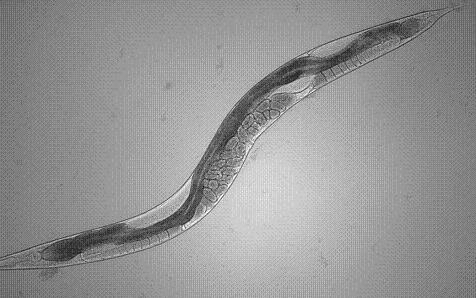
Researchers - from the Silverman Institute for Life Sciences at the Hebrew University of Jerusalem and the Johns Hopkins University School of Medicine - report another step towards understanding cell mutations (changes in the genetic material) that cause various diseases, including early aging and early death.
The research focused on mutations in the nuclear envelope of a small worm called 'C.elegans'.
The aim of the research is to reach a better understanding of mutations in the proteins found in the envelope of the cell nucleus in humans.
Such mutations in the proteins of the nuclear envelope, and especially in the proteins called types A and C, cause diseases in humans, among them the aging disease (Progeria syndrome named after Hutchinson-Gilford, which manifests itself in accelerated aging in children and causes death before the age of 13); muscle weakness; Weakening of the heart muscle and problems in the development and growth of children.
The study was recently published in the American journal Proceedings of the National Academy of Sciences. The research was carried out by Ayelet Margalit, a doctoral student in the Department of Genetics at the Hebrew University, under the guidance of Prof. Yosef Greenbaum and in collaboration with Prof. Catherine L. Wilson and Dr. Miriam Segura-Totan from Johns Hopkins University.
"Experiments on the removal of the lamin protein and other proteins that bind to it in the worm indicate a mutual influence and a dependency between the proteins," says Ayelet Margalit. "Also, they show damage to various proteins necessary for normal cell division.
"Although this worm has only one type of lamin protein and a smaller number of proteins that bind to it, the processes that occur in it are very similar to the processes that occur in humans and provide clues about the causes of lamin-related diseases."
Two phenomena were observed from damage to protein complexes containing lamin: one, a halt in cell division and the creation of a sort of static bridge of DNA between cells that were supposed to separate; and the other, damage to the structure of the worm's sex cells. In both cases, the worm's ability to grow and reproduce was damaged.
The researchers hope that further experiments that will be conducted in the future with this worm will reveal the role of nuclear envelope proteins in the cell and the function of lamin-based structures, as well as why mutations in these proteins cause such a wide variety of diseases.
